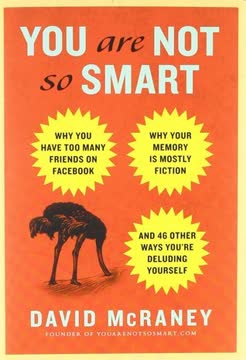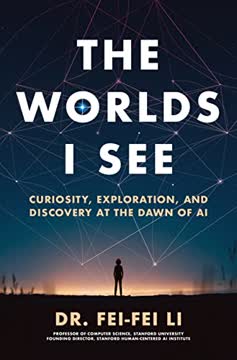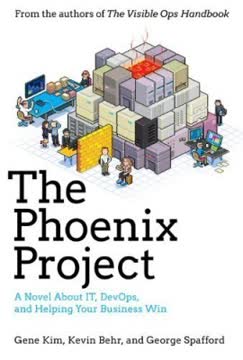Key Takeaways
1. Creativity thrives on unconventional thinking and reframing problems
"Real creativity often comes with risk."
Reframe the problem. Creative solutions often emerge when we look at problems from a different angle. Instead of trying to solve the problem as presented, step back and consider if there's a way to redefine or reframe it entirely. This approach can lead to innovative solutions that weren't apparent before.
Challenge assumptions. Many problems seem unsolvable because we accept certain constraints or assumptions without questioning them. By identifying and challenging these assumptions, we can open up new possibilities for creative problem-solving. Ask yourself: What if the opposite were true? What if we removed this constraint entirely?
Embrace risk. True creativity often involves stepping outside of comfort zones and taking risks. This might mean proposing an unconventional idea, pursuing a solution that others have dismissed, or challenging established norms. While risky, this approach can lead to breakthrough innovations and solutions that set you apart from the competition.
2. Real innovation comes from looking where others aren't
"Because they've had more experiences, or thought more about those experiences, than other people."
Diversify your inputs. Innovation often comes from making unexpected connections between disparate ideas or fields. To increase your creative potential, expose yourself to a wide range of experiences, knowledge, and perspectives. This might include:
- Reading books outside your field
- Attending lectures on unfamiliar topics
- Traveling to new places
- Engaging with people from different backgrounds
Seek out the overlooked. Instead of focusing on the same areas as everyone else, look for opportunities in neglected or undervalued spaces. This might involve:
- Exploring niche markets
- Investigating old ideas that were ahead of their time
- Considering how solutions from one field might apply to another
Connect the dots. The key to innovation is not just having diverse experiences, but being able to synthesize them in novel ways. Practice making connections between seemingly unrelated ideas or concepts. This skill of "connecting the dots" is what sets truly innovative thinkers apart.
3. Disaster and setbacks can be opportunities in disguise
"Disaster is a gift."
Reframe setbacks. Instead of viewing failures or setbacks as purely negative, try to see them as opportunities for growth, learning, or change. Every disaster has the potential to push you in a new, potentially better direction if you're open to it.
Learn from failure. Analyze what went wrong and why. Use this information to:
- Improve your processes
- Identify weaknesses in your approach
- Discover new opportunities you hadn't considered before
Embrace change. Often, disasters force us out of our comfort zones and compel us to try new approaches. This can lead to innovations and improvements that wouldn't have happened otherwise. Be open to reinventing yourself or your business in the face of adversity.
4. Effective communication requires understanding your audience
"Control the context and you control the choice."
Know your audience. Before crafting your message, take the time to understand who you're communicating with. Consider their:
- Background and experiences
- Needs and motivations
- Existing knowledge of the topic
- Potential objections or concerns
Speak their language. Tailor your communication style and content to your audience. This might mean:
- Using technical jargon for experts
- Simplifying complex concepts for laypeople
- Employing humor or storytelling for a more engaging presentation
Frame your message. The way you present information can significantly impact how it's received. Consider different ways to frame your message to make it more compelling or relevant to your specific audience. This might involve emphasizing different aspects of your idea or product depending on who you're talking to.
5. Sometimes the best solution is to change the question, not answer it
"Reinterpreting the brief is often solving the problem."
Question the question. Before diving into problem-solving, take a step back and examine the question itself. Is it the right question to be asking? Are there underlying assumptions that need to be challenged?
Redefine the problem. Often, the initial framing of a problem limits the potential solutions. By redefining the problem, you can open up new possibilities. Consider:
- What's the real goal or desired outcome?
- Are there alternative ways to achieve this goal?
- What constraints can be removed or changed?
Look upstream. Instead of tackling the problem directly, consider addressing its root causes. This approach can lead to more comprehensive and effective solutions. Ask yourself:
- What's causing this problem in the first place?
- Are there earlier interventions that could prevent the problem altogether?
6. Brand reputation is built on actions, not just claims
"Don't tell me you're a comedian, make me laugh."
Actions speak louder than words. A brand's reputation is built primarily through its actions and the experiences it provides to customers, not through its marketing claims. Focus on delivering real value and positive experiences.
Be authentic. Ensure that your brand's actions align with its stated values and promises. Inconsistencies between what a brand says and what it does can quickly erode trust and reputation.
Build reputation over time. Brand reputation is not built overnight or through a single campaign. It's the result of consistent, positive actions over time. Consider:
- How each interaction contributes to your brand's reputation
- The long-term impact of your decisions and actions
- Ways to consistently deliver on your brand promises
7. Beliefs and perceptions often trump facts in decision-making
"Belief is what you've got when you haven't got knowledge."
Understand the power of perception. People often make decisions based on their beliefs and perceptions rather than objective facts. Recognize that changing someone's mind often requires more than just presenting logical arguments or data.
Address emotions and beliefs. When trying to persuade or influence, consider:
- The underlying beliefs and values of your audience
- Emotional factors that might be influencing their perspective
- Ways to align your message with their existing beliefs or values
Use storytelling and framing. Facts alone are often not enough to change minds. Use storytelling techniques and careful framing to make your message more compelling and relatable. This can help bridge the gap between facts and beliefs.
8. Creativity requires discipline and focus, not just inspiration
"Discipline facilitates creativity."
Set constraints. Counterintuitively, creativity often thrives within constraints. Set clear parameters for your creative work, such as:
- Time limits
- Specific goals or objectives
- Limited resources or tools
Develop a process. Creativity isn't just about waiting for inspiration to strike. Develop a systematic approach to creative work that includes:
- Regular brainstorming sessions
- Methods for capturing and developing ideas
- Techniques for overcoming creative blocks
Practice regularly. Like any skill, creativity improves with practice. Set aside regular time for creative exercises and projects, even when you don't feel particularly inspired. This builds the "creative muscle" and makes it easier to generate ideas when you need them.
9. The presentation of an idea can be as important as the idea itself
"Present your idea on toothpicks."
Craft the presentation. How you present an idea can significantly impact its reception. Consider:
- The format (visual, verbal, written, interactive)
- The setting and context
- The sequence of information
Tailor to the audience. Adapt your presentation to the specific needs, interests, and expectations of your audience. This might mean:
- Emphasizing different aspects for different stakeholders
- Adjusting the level of technical detail
- Using analogies or examples that resonate with the audience
Practice and refine. Spend time honing your presentation skills. This includes:
- Rehearsing your delivery
- Anticipating and preparing for questions or objections
- Refining your visual aids or supporting materials
10. Allowing for the unforeseen often leads to better long-term results
"We're only going to be doing this once. We'd better allow for the unforeseen."
Plan for flexibility. When designing systems or making long-term plans, build in room for adaptation and growth. This might involve:
- Creating modular designs that can be easily expanded or modified
- Leaving buffer in budgets and timelines
- Developing contingency plans for various scenarios
Think long-term. Consider not just immediate needs, but potential future developments. Ask yourself:
- How might needs or circumstances change over time?
- What emerging trends or technologies might impact this in the future?
- What unforeseen uses or applications might arise?
Value robustness over efficiency. While efficiency is important, prioritize creating solutions that can withstand unforeseen challenges or adapt to changing circumstances. This approach often leads to more sustainable and valuable results in the long run.
Last updated:
FAQ
What's "One Plus One Equals Three" about?
- Creative Thinking Focus: The book is a masterclass in creative thinking, emphasizing how new ideas are often combinations of existing ones.
- Diverse Experiences: It highlights the importance of having diverse experiences to connect different ideas and foster creativity.
- Practical Examples: Through various stories and examples, the book illustrates how thinking differently can lead to innovative solutions.
- Author's Background: Written by Dave Trott, a renowned figure in advertising, the book draws on his extensive experience in the industry.
Why should I read "One Plus One Equals Three"?
- Enhance Creativity: The book provides insights into enhancing your creative thinking skills, which are valuable in any field.
- Real-World Applications: It offers practical examples and stories that demonstrate how creative thinking can solve real-world problems.
- Inspiration for Innovators: If you're looking for inspiration to think outside the box, this book is a treasure trove of ideas.
- Engaging Storytelling: Dave Trott's engaging storytelling makes complex concepts accessible and enjoyable to read.
What are the key takeaways of "One Plus One Equals Three"?
- Connections Matter: Creativity is about making connections between seemingly unrelated ideas.
- Embrace Ignorance: Sometimes not knowing too much about a subject can lead to more innovative solutions.
- Question the Norm: Challenging conventional wisdom can lead to breakthroughs.
- Disaster as Opportunity: Setbacks can be reframed as opportunities for growth and innovation.
How does Dave Trott define creative thinking in "One Plus One Equals Three"?
- Combination of Ideas: Creative thinking is defined as the ability to combine old elements in new ways.
- Spotting Relationships: It involves seeing relationships and connections that others might miss.
- Diverse Inputs: The more varied your experiences, the more creative connections you can make.
- Beyond Linear Solutions: Creative thinking moves beyond predictable, linear solutions to find unexpected ones.
What is the significance of the title "One Plus One Equals Three"?
- Beyond Conventional Math: The title suggests that combining two ideas can result in something greater than the sum of its parts.
- Creative Synergy: It emphasizes the power of synergy in creative thinking, where new combinations lead to innovative outcomes.
- Challenge Norms: The title itself challenges conventional thinking, encouraging readers to look beyond the obvious.
- Metaphor for Creativity: It serves as a metaphor for how creativity can transform simple ideas into groundbreaking innovations.
What are some of the best quotes from "One Plus One Equals Three" and what do they mean?
- "Regret is worse than embarrassment." This quote encourages taking risks and speaking up, as the fear of regret should outweigh the fear of embarrassment.
- "Disaster is a gift." It suggests that setbacks can be opportunities for growth and innovation if approached with the right mindset.
- "Belief trumps fact." This highlights the power of belief in driving action and creativity, even when facts are uncertain.
- "Creativity is messy." It acknowledges that the creative process is not always neat or predictable, but that's where innovation happens.
How does Dave Trott use real-world examples in "One Plus One Equals Three"?
- Historical Stories: The book includes historical anecdotes, such as the story of Nicholas Winton saving children during WWII, to illustrate creative problem-solving.
- Business Cases: It features business examples, like the success of Pixar and the creation of the Sten gun, to show how creativity can lead to success.
- Personal Experiences: Trott shares personal experiences from his advertising career to provide practical insights into creative thinking.
- Diverse Fields: Examples span various fields, from science to entertainment, demonstrating the universal applicability of creative thinking.
What is the "Value of Ignorance" as discussed in "One Plus One Equals Three"?
- Fresh Perspective: Ignorance can lead to a fresh perspective, unburdened by conventional knowledge or assumptions.
- Innovative Solutions: Not knowing too much can sometimes lead to more innovative solutions, as you're not constrained by existing frameworks.
- Encourages Exploration: Ignorance encourages exploration and questioning, which are key components of creativity.
- Avoids Overthinking: It helps avoid overthinking, allowing for more spontaneous and creative ideas to emerge.
How does "One Plus One Equals Three" address the concept of "Question the Question"?
- Reframe Problems: The book encourages reframing problems to find new solutions, rather than accepting the initial question at face value.
- Challenge Assumptions: It suggests challenging underlying assumptions to uncover hidden opportunities.
- Creative Problem-Solving: By questioning the question, you can often find more creative and effective solutions.
- Examples Provided: The book provides examples of how reinterpreting a brief or question led to successful outcomes.
What role does "Belief Trumps Fact" play in "One Plus One Equals Three"?
- Power of Belief: The book emphasizes the power of belief in driving creativity and action, even when facts are not fully known.
- Confidence in Ideas: Belief can give you the confidence to pursue ideas that others might dismiss.
- Overcoming Doubt: It helps overcome doubt and hesitation, which can stifle creativity.
- Real-World Impact: The book provides examples of how belief led to successful innovations and breakthroughs.
How does "One Plus One Equals Three" illustrate the idea that "Creativity is Messy"?
- Non-Linear Process: Creativity is portrayed as a non-linear process that involves trial and error.
- Embrace Chaos: The book encourages embracing chaos and uncertainty as part of the creative journey.
- Unexpected Outcomes: It highlights that unexpected outcomes can often lead to the most innovative solutions.
- Real-Life Examples: Through real-life examples, the book shows how messiness in creativity can lead to groundbreaking results.
What is the importance of "Disaster is a Gift" in "One Plus One Equals Three"?
- Opportunity in Setbacks: The book views disasters as opportunities for growth and innovation.
- Reframe Challenges: It encourages reframing challenges as gifts that can lead to new paths and solutions.
- Learning from Failure: Disasters are seen as valuable learning experiences that can fuel creativity.
- Inspirational Stories: The book includes inspirational stories of individuals who turned disasters into successes.
Review Summary
One plus one equals three is a collection of short anecdotes and stories that aim to inspire creative thinking. Readers appreciate the concise, easy-to-read format and find the examples thought-provoking. Many praise the book for its ability to shift perspectives and encourage out-of-the-box thinking. Some criticize the choppy writing style and lack of cohesive structure. Overall, most reviewers find value in the book's unique approach to creativity, though opinions vary on its effectiveness as a "masterclass" in creative thinking.
Similar Books










Download PDF
Download EPUB
.epub digital book format is ideal for reading ebooks on phones, tablets, and e-readers.






